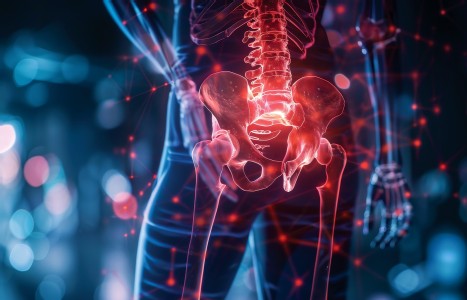Pelvic pain has a prevalence of >25% in women and >15% in men, and up to 50% of cases are undiagnosed, demonstrating that there is a definite need for pelvic care awareness among health care practitioners. As holistic practitioners, acupuncturists offer a safe space for clients and are often the practitioners clients seek out when nothing else has worked. Thus, acupuncturists are presented with an opportunity to serve an underserved population.
Successful Strategies in Integrating Acupuncture and Shiatsu in a Hospital Oncology Program
Colleagues from the Network of Researchers in Public Health in CAM recently published an article of interest to our Traditional Asian Medicine community. Their article describes best practices used in creating and sustaining successful integrative health services from hospital and community-based programs in Australia. Their research is unique in its focus on the centrality of administrative support staff in integrative programming. The authors, Singer and Adams, conducted a survey of health service managers responsible for administering these programs. The role of health service managers includes coordinating clinical activities; being responsible for administrative and fiscal aspects of integrative programming; establishing and maintaining protocols and procedures; and ensuring the ongoing clinical competencies of all healthcare staff.
Integrated health care has been defined as "a collaborative team approach that includes both conventional and complementary and alternative medicine (CAM) health care providers."
Singer and Adams' article includes the results of interviews with eight health service managers who represented five community-based programs (drug and alcohol rehabilitation, refugee mental health, and women's health) and two hospital-based programs (cancer treatment center and chronic illness specialty). Acupuncture was offered at one of the hospital sites and at three of the community-based clinics. Shiatsu was included in the services of two of the community-based centers. One of the community clinics also offered Chinese Herbal Medicine. Accessibility to care was assured to all patients by offering these services at no cost to patients.
All the health service managers interviewed were committed to integrative programming and enthusiastic about including complementary practices in their institution's services. The key components necessary for a successful integrative practice included the following:
- Enthusiastic and informed health service managers.
- Validation of the clinical importance of CAM.
- Climate of inter-disciplinary respect and collegiality.
- Supportive organizational structures.
- Clear respectful boundaries.
- Knowledge-sharing.
- Well-informed referral practices.
- Promotion of CAM research.
- Cultivation of CAM champions.
- Co-location of multi-disciplinary services.
Although most of these prerequisites are clear, the last two may require a bit of explanation. CAM champions refer to senior clinical or administrative staff who are supportive of CAM modalities and hold positions of power and authority within an institution. Co-location refers to having multiple services under the same roof, sometimes called "one stop shopping."
One such model of an integrative program is the Hematology/Oncology clinic at Tufts Medical Center in Boston. Acupuncture and Shiatsu have been offered since 2012 to patients who are interested in using these approaches. The acupuncturist on the team, Barbara Parton RN, LAc, has worked in other hospital settings as well as in hospice care. Edie Snow ABT has practiced shiatsu since 1999. Both of these providers work at Pathways to Wellness in Boston where they work in Pathways' main clinic, as well as in home care programs.
Although these services were initially piloted for three months on a once per week schedule, acupuncture and shiatsu proved so popular that both clinics were extended to two days per week. Services are offered in out-patient treatment rooms, as well as in the infusion clinic, where acupuncture can be administered during the process of providing chemotherapy. The main reasons for referral for acupuncture include pain management, control of nausea and vomiting associated with chemotherapy and addressing sleep disturbances.
There is no cost to patients to use these services. Acupuncture and shiatsu treatments are subsidized by the Donaldson Charitable Trust, which funds care and management of fatigue and other symptoms associated with cancer treatment.
Similar to challenges faced by other healthcare organizations, space is at a premium and there is no such luxury as "extra room." Parton reports that acupuncture services are located in treatment rooms in the midst of the clinic, surrounded by chemotherapy treatment rooms. This enables her to have access to both patients and other providers, which has resulted in optimal interdisciplinary communication.
Other contributors to the success of the clinic include practitioner flexibility and "going the extra mile" to promote collaboration. Parton states that these characteristics are essential when dealing with the complexities of a hospital system. Multiple stake-holders include patients, departments, personnel including all areas of providers and support staff, and administrators.
Marybeth Singer MS, ANP-BC, AOCN, ACHPN is a nurse practitioner who coordinates the integrative services in Tufts Medical Center's Cancer Center. Her vision and commitment to care were responsible for including acupuncture and shiatsu in the clinic's service menu. She feels that the inclusion of these modalities provides added value for the Cancer Center and that these services "make our clinic competitive with other local hospitals which also offer integrative treatment approaches. Barbara Parton describes Singer as "a tireless advocate, long-time medical staffer at Tufts, with a history of success in her work. She is a champion of any approach that have been proven to help patients."
Singer also reflected on aspects of the program that have contributed to patients and providers favorable responses. "Receiving treatment in a familiar venue, surrounded by caring and familiar faces, is comforting to many patients. It makes the experience less threatening and contributes to a seamless integration of health and wellness promotion."
She acknowledges the challenge of using standard hospital out-patient treatment rooms that lack comfortable treatment tables and a healing ambiance. Singer's dream is to have a dedicated space for acupuncture and shiatsu therapies that would be available whenever the clinic was open. Massage tables and gentle lighting would both be standard in this vision for a hospital-based integrative center.
Clearly, there are numerous elements needed in order to implement the provision of acupuncture and shiatsu in a hospital center. The health service managers interviewed in Singer and Adams' article provided a comprehensive cataloging of factors that contribute to the success of an integrative clinic. The good news is that these factors are realistic and attainable. In 2014, administrators and providers don't need to re-invent this wheel. Even more positive is that we have allies in the process of promoting acupuncture and Asian medicine – namely, health service administrators and providers who are committed to serving their patients and clients while also addressing the bread and butter issues of space constraints and finances. As more researchers are demonstrating the clinical benefits, level of client satisfaction, and potential cost-savings of using acupuncture.
Working together with colleagues in allied health professions creates the synergy necessary to create sustainable and effective integrative health programming. In addition to contributing to the health and wellness of the public, our collaborative efforts bring us closer to ensuring that health care that includes wellness is a right, not a privilege.
Resources
- Singer J, Adams J. An exploratory study of the health service managers role in providing effective integrative health care. European Journal of Integrative Medicine 2013;5(1):27-35.
- Vohra S, Feldman K, Johnston B, Waters K, Boom H. Integrating complementary and alternative medicine into academic medical centers: experience and perceptions of nine leading centers in North America. BMC Health Service Research 2005;5:78-84.
- Ambrosio EM, Bloor K, MacPherson H. Costs and consequences of acupuncture as a treatment for chronic pain: a systematic review of economic evaluations conducted alongside randomised controlled trials. Complementary Therapies in Medicine. 2012 Oct;20(5):364-74. doi: 10.1016/j.ctim.2012.05.002. Epub 2012 Jun 6.


